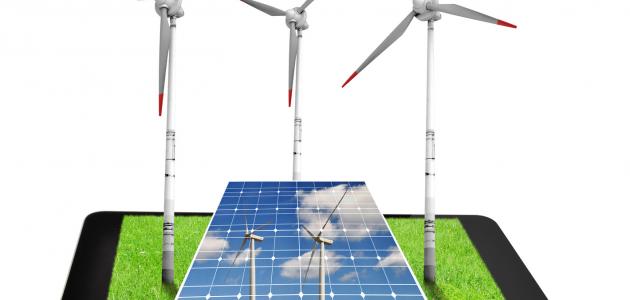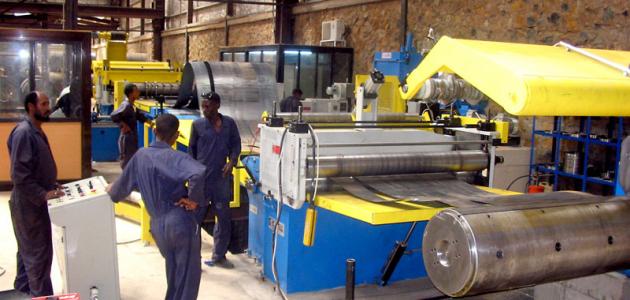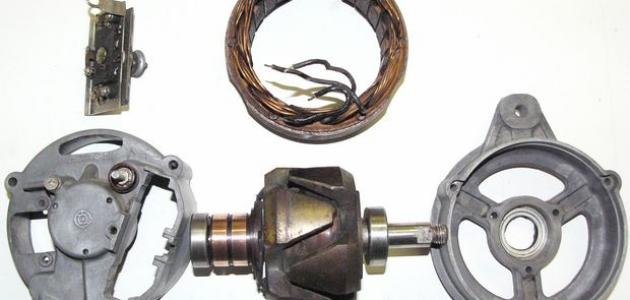Solar Panels
A solar panel is a device used to generate electrical energy from sunlight, by converting light energy either into electrical energy, or into thermal energy, or by stimulating sunlight to cause certain chemical reactions, and the energy generated by solar panels and cells is considered natural renewable energy ; Its source is practically inexhaustible from the sun, and it is clean and environmentally friendly.
The sun is the largest source of energy located near the earth, but the strength of its rays when it reaches the surface of the earth is very small compared to its original energy, due to its dispersion in space and the absorption of part of it by the earth’s clouds and the atmosphere, so more than half of the sun’s rays may be dispersed during its passage from the upper atmosphere To the surface only, however, the amount of energy that the earth's surface receives from the sun remains sufficient (when properly managed and used) to cover the energy needs of all human beings.
Light is waves of electric and magnetic energies, consisting of very small particles called photons, and specific techniques and types of matter can be used to take advantage of photons in the production of electrical or thermal energy, and it is easier to convert them into direct heat, but this may not meet the required uses for it . And heat can be obtained by placing a glass layer over a mineral material, and by taking advantage of the properties of heat-transmitting metals, it is easy to collect the sun’s heat and use it to heat the air or water for domestic uses, as in solar heaters.
Read also:How is clay made?Semiconductor materials are used to produce solar cells that obtain electricity, as silicon is the most common material in its manufacture, because silicon is a heat-conducting material that has the ability to be stable and maintain its properties in the surrounding atmospheric conditions, but in return it is not a very strong conductor, which makes it Ideal for use in solar cells, in addition to the availability of silicon in large quantities in nature, and its low cost compared to other materials, and the potential difference is taken advantage of to obtain charged electrons from pure silicon slices when sunlight falls on them.
Manufacturing a solar cell from simple raw materials
How solar panels work
When the solar cells are exposed to the sun's rays, the photons of light work to load their energy to the electrons in the positive electrode of the silicon, which leads to its ionization, that is, the acquisition of an electric charge by its atoms. An electric lamp (for example) and works to turn it on.
Materials
The following components can be used:
- wafers of a semiconductor component; One of them carries a positive charge and the other carries a negative charge. Here it should be noted that semiconductor materials are chemically treated before they are used. Usually, the main material for building a solar panel is crystalline silicon wafers, and they are either mono- or polycrystalline.
- Charge controller device.
- Wires to transmit electric current.
- An electric load or batteries to store energy.
- Electric inverter (to convert current from AC to AC).
- A glass cover in order to protect it from surrounding weather conditions and external factors, such as animals.
- Two pieces of polished glass of the same size.
- pencil.
- An multimeter (an instrument for measuring voltage and current).
- Clear adhesive.
Setting method
The following steps can be followed to manufacture a solar panel:
Read also:watch industry- The solar panel is installed by gluing the glass panels with silicon chips, and this requires the use of special materials.
- The electric inverter with the battery is connected to a set of wires, so that the negative wires are connected to the negative poles and vice versa.
- The charge adjusting device is connected to the battery on one side and to the solar panel on the other, with a set of wires.
- Additional wires can be extended to connect the battery to specific devices within the home.
- The solar panel is placed outside in a place where there is plenty of sunlight, so that it can start working.
The first solar cell in history
The innovation of solar cells dates back to the year 1839 when the French physicist Alexandre Edmond Becueler made an important discovery. He was a young man of nineteen at the time, but he managed to invent the electrode. It is a tool capable of converting light rays into electrical energy by projecting them onto slices of certain elements. And from that date, serial experiments began to reach the production of electrical energy and benefit from it in a practical way from the energy of the sun; In 1888, Edward Weston obtained the first patent in the United States for the manufacture of solar cells, and the development process continued and continues to this day to produce solar cells with higher efficiency in generating electricity at a lower cost, and the latest research is currently taking place using nanotechnology.
Read also:How is dynamite made?Advantages of using solar cells
Among the advantages of solar energy are the following:
- Energy production through sunlight, which is an inexhaustible source of energy.
- The energy produced is environmentally friendly. It is clean without residue or side effects on the environment.
- Once the solar cells are installed and connected, they start working, and do not need an operator.
- Solar cells do not need electronic maintenance.
- It can transfer energy directly to the place of use without the need to store it or transfer it over long distances (in the case of domestic uses).
Types of solar cells according to their composition
There are many types of solar cells that are manufactured to meet specific requirements, the most famous of which are:
- Monocrystalline silicon cellsThese are the highest-efficiency cells, commonly used on rooftops, containing high quantities of silicon and very high purity, as it is only mixed with small proportions of other elements, and its efficiency is the largest among all types of solar cells, but it is considered relatively expensive. Its shape is quadrangular, and the work efficiency reaches from 16% to 20%, and it needs a little space, and its life span is long.
- Polycrystalline silicon cellsIt is considered the least expensive, but the efficiency in electricity production is also lower. The shape of the cell is curved in a long rectangle, and the work efficiency reaches from 13% to 16%. It needs larger spaces to work in. It was the first solar cell to be manufactured in commercial quantities, and that was in 1981.
- Thermal solar cells (solar heaters)It is used to heat water directly for domestic use or in swimming pools, and the resulting water can also be used in air conditioners by connecting the circuit to these cells, which directly heat plates of metals and transfer heat from them to water or air









